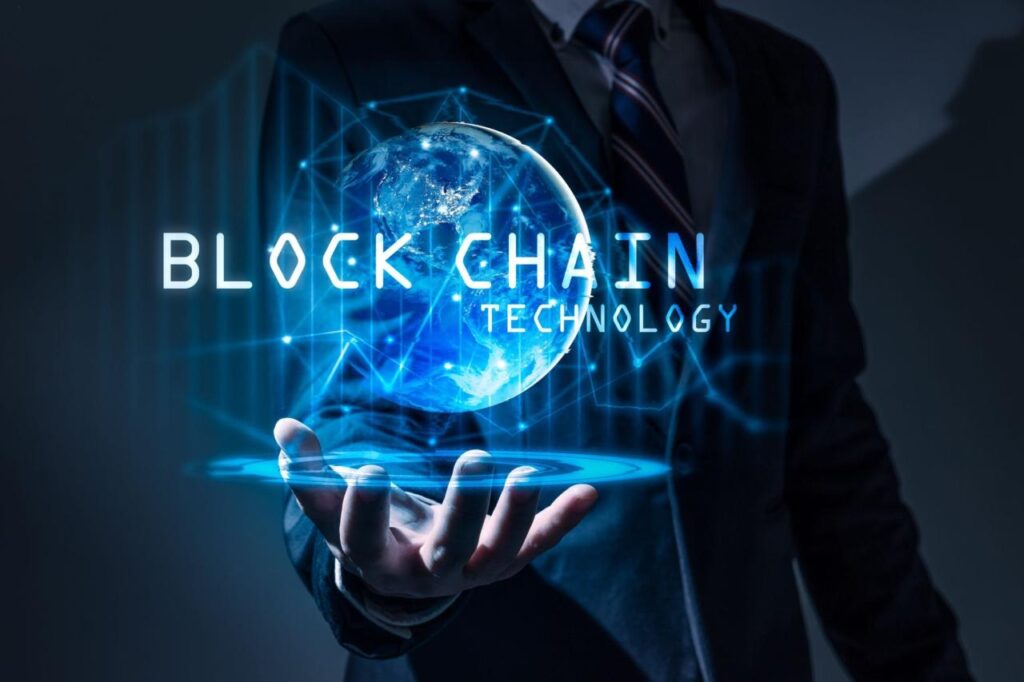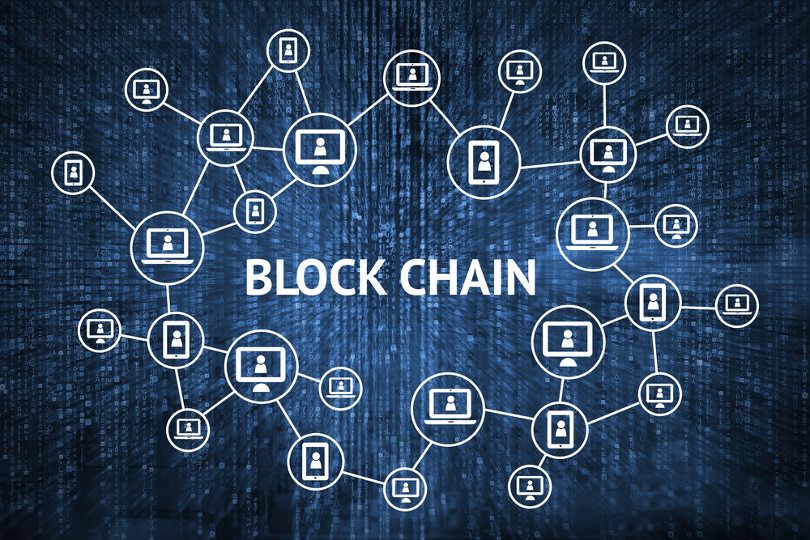The digital age has seen countless innovations, but few possess the transformative potential of blockchain technology. Once primarily associated with cryptocurrencies like Bitcoin, blockchain has evolved into a foundational force, poised to reshape entire industries and usher in a truly new economy. At its core, blockchain is a decentralized, immutable, and transparent distributed ledger that records transactions across a network of computers. This innovative structure eliminates the need for central intermediaries, fostering unprecedented levels of trust, security, efficiency, and transparency. Its applications extend far beyond digital money, promising to revolutionize everything from supply chains and healthcare to voting systems and intellectual property, fundamentally powering a new, more equitable, and efficient global economy.
How Blockchain Works
To truly grasp the profound impact of blockchain, it’s essential to understand its underlying mechanics and the fundamental shift it represents from traditional centralized systems.
A. The Centralized System: Traditional Limitations
For centuries, our transactions and data records have relied on centralized authorities. Think of banks, governments, or large corporations. While seemingly efficient, this model carries inherent vulnerabilities and inefficiencies.
- Single Points of Failure: A centralized database or authority is a single point of failure. If it’s compromised by a cyberattack, a natural disaster, or internal fraud, the entire system can collapse, leading to data loss, service disruption, and widespread mistrust.
- Lack of Transparency: Centralized systems often operate as black boxes. Users typically don’t have full visibility into how their data is managed, how transactions are processed, or how decisions are made, leading to opacity and potential for manipulation.
- Inefficiency and Intermediaries: Every transaction often involves multiple intermediaries (banks, clearinghouses, lawyers), each adding costs, delays, and complexity. This increases friction in processes like cross-border payments or supply chain tracking.
- Trust Dependence: Users must place implicit trust in the central authority to accurately record, secure, and manage their data. This trust can be fragile and easily eroded by breaches or mismanagement.
- Censorship and Control: Central authorities have the power to control, censor, or reverse transactions and access to data, which can be problematic in situations requiring absolute neutrality and immutability.
B. The Blockchain Breakthrough: Decentralization Defined
Blockchain emerged as a revolutionary alternative to this centralized paradigm, offering a fundamentally different way to record and share information.
- Distributed Ledger Technology (DLT): At its heart, blockchain is a type of DLT. Instead of a single central database, copies of the ledger are distributed and synchronized across many participants (nodes) in a network. Every participant holds a copy of the entire transaction history.
- Blocks and Chains: Transactions are grouped into “blocks.” Once a block is filled with validated transactions, it’s cryptographically linked to the previous block, forming a “chain.” Each block contains a cryptographic hash of the previous block, creating an unbreakable chronological link.
- Immutability: Once a block is added to the chain, it’s nearly impossible to alter or delete. Any attempt to tamper with a past block would change its hash, breaking the chain and immediately alerting all other network participants. This creates an unchangeable and verifiable record.
- Cryptography: Advanced cryptographic techniques (like hashing and digital signatures) secure transactions and link blocks, ensuring data integrity and user authentication. This provides strong security without relying on a central authority.
- Consensus Mechanisms: For a new block to be added to the chain, a majority of network participants (or nodes) must agree on its validity. Different consensus mechanisms exist (e.g., Proof of Work, Proof of Stake), but their common goal is to ensure all distributed ledgers are consistent and true, maintaining trust in the network without a central arbiter.
- Transparency (Pseudonymous): While participant identities are often pseudonymous (represented by cryptographic addresses), all validated transactions on a public blockchain are visible to every network participant. This inherent transparency makes it difficult to hide fraudulent activities.
This decentralized, immutable, and transparent nature is what gives blockchain its power, moving us from a trust-based system to a truth-based system, where trust is built into the protocol itself.
Core Pillars of Blockchain Technology
The functionality and transformative power of blockchain stem from several interconnected and innovative technological pillars.
A. Distributed Ledger Technology (DLT)
As the foundational concept, DLT signifies a database that is shared and synchronized across multiple sites, institutions, or geographies.
- Replicated Data: Every participant (node) in the network maintains an identical copy of the ledger.
- Synchronized Updates: When a new transaction occurs and is validated, it’s propagated across the network, and all copies of the ledger are updated in real-time, ensuring consistency.
- No Central Administrator: There is no single central authority controlling the ledger; instead, it’s maintained by the collective network participants through consensus.
B. Cryptography: Securing the Chain
Cryptography is fundamental to blockchain’s security and integrity.
- Hashing: A cryptographic hash function takes input data and produces a fixed-size string of characters (the hash). Any tiny change in the input data results in a completely different hash. Each block’s header contains the hash of the previous block, creating an unalterable link.
- Digital Signatures: Participants use public-key cryptography to digitally sign their transactions, proving ownership and ensuring that transactions haven’t been tampered with. This ensures authenticity and non-repudiation.
- Merkle Trees: These are cryptographic data structures used to efficiently verify the integrity of large sets of data. In a blockchain, a Merkle tree summarizes all the transactions in a block into a single root hash, which is included in the block header.
C. Consensus Mechanisms: Agreement Without Trust
Consensus mechanisms are algorithms that ensure all distributed nodes in a blockchain network agree on the validity of transactions and the state of the ledger, without needing a central authority.
- Proof of Work (PoW): (Used by Bitcoin, Ethereum 1.0) Miners compete to solve a complex computational puzzle. The first to solve it gets to add the next block. This is energy-intensive but highly secure against malicious attacks due to the cost of ‘rewriting’ history.
- Proof of Stake (PoS): (Used by Ethereum 2.0, Solana, Cardano) Validators are chosen to create new blocks based on the amount of cryptocurrency they “stake” (lock up as collateral). This is far more energy-efficient and scalable than PoW.
- Delegated Proof of Stake (DPoS): (Used by EOS, Tron) A variation of PoS where coin holders vote for a small number of delegates who then validate transactions. This offers faster transaction times but is more centralized than pure PoS.
- Practical Byzantine Fault Tolerance (PBFT): (Used by Hyperledger Fabric, Tendermint) A consensus algorithm suitable for permissioned blockchains (where participants are known), offering high transaction throughput and low latency.
- Proof of Authority (PoA): (Used by some private blockchains) A consensus mechanism where transactions are validated by pre-approved authoritative nodes, offering high speed and efficiency but with a high degree of centralization.
D. Smart Contracts: Self-Executing Agreements
Smart contracts are self-executing contracts with the terms of the agreement directly written into lines of code. They run on a blockchain, automatically executing when pre-defined conditions are met.
- Automation: Eliminates the need for intermediaries to enforce agreements, automating various processes.
- Trustless Execution: Once deployed, smart contracts execute exactly as programmed, without the possibility of censorship, downtime, fraud, or third-party interference.
- Applications: Used for escrow services, automated payments, supply chain logistics, decentralized finance (DeFi), and more.
- Turing Completeness: Some smart contract platforms (like Ethereum) are Turing complete, meaning they can perform any computation that a universal computer can, enabling complex logic.
E. Decentralized Applications (dApps)
Decentralized applications (dApps) are applications that run on a decentralized peer-to-peer network, leveraging blockchain for their backend logic and data storage, often utilizing smart contracts.
- Censorship Resistant: As they don’t rely on a single server, dApps are resistant to censorship or downtime.
- Open Source: Many dApps are open-source, promoting transparency and community development.
- Community Governance: Often incorporate decentralized autonomous organizations (DAOs) for community-driven governance.
Transformative Advantages Blockchain Powers for a New Economy
The unique properties of blockchain technology offer a compelling set of advantages that are driving its adoption and fundamentally reshaping various sectors, paving the way for a more efficient and trustworthy new economy.
A. Enhanced Security and Immutability
Blockchain’s cryptographic foundation and distributed nature make it inherently more secure and resistant to tampering than traditional centralized databases.
- Tamper-Proof Records: Once a transaction is recorded and added to the blockchain, it cannot be altered or deleted. Any attempt to modify a past record would invalidate the cryptographic hash of subsequent blocks, immediately alerting all network participants. This creates an auditable and trustworthy ledger.
- Decentralized Attack Surface: There is no single point of failure that can be targeted by hackers. An attacker would need to control a majority of the network’s computing power (for PoW) or staked assets (for PoS) to compromise the system, which is incredibly difficult and expensive for large public blockchains.
- Transparency and Auditability: The distributed nature means every participant has a copy of the ledger. On public blockchains, this allows for unparalleled transparency, making it easy to audit transactions and trace assets, deterring fraudulent activities.
- Resistance to Censorship: Without a central authority, transactions cannot be easily blocked or reversed by a single entity, ensuring integrity and neutrality.
B. Increased Transparency and Trust
Blockchain builds trust directly into its protocol, reducing the need for intermediaries and fostering greater visibility.
- Trustless Interactions: Parties can transact or interact without needing to implicitly trust each other or a third-party intermediary. Trust is established by the verifiable and immutable nature of the blockchain itself.
- Verifiable Transactions: Every participant can verify the history of transactions on the ledger, ensuring accuracy and accountability.
- Reduced Fraud: The transparency and immutability of records make it significantly harder to commit fraud or manipulate data, as any illicit activity would be permanently recorded and visible.
- Enhanced Accountability: In supply chains, for example, every step of a product’s journey can be recorded on a blockchain, providing an auditable trail and increasing accountability for all participants.
C. Greater Efficiency and Reduced Costs
By streamlining processes and eliminating intermediaries, blockchain can lead to significant operational efficiencies and cost savings.
- Faster Transactions: Cross-border payments, for instance, can be settled in minutes or seconds on a blockchain, compared to days through traditional banking systems, enabling real-time global commerce.
- Elimination of Intermediaries: Smart contracts automate agreements, removing the need for lawyers, brokers, or escrow agents in many transactions, reducing fees and processing times.
- Streamlined Processes: Manual reconciliation, paperwork, and multi-party verification steps can be automated or simplified, reducing administrative overhead and human error in complex workflows (e.g., supply chain management, trade finance).
- Reduced Overhead: Lower transaction fees and reduced administrative burdens translate directly into cost savings for businesses and consumers.
D. Enhanced Traceability and Provenance
Blockchain’s immutable ledger provides an unparalleled ability to track assets and data across their entire lifecycle.
- End-to-End Visibility: In supply chains, every step from raw material sourcing to manufacturing, shipping, and retail can be recorded on a blockchain, providing complete traceability and provenance for products.
- Counterfeit Prevention: Consumers can verify the authenticity of products by scanning QR codes linked to blockchain records, combating counterfeiting in luxury goods, pharmaceuticals, and other industries.
- Supply Chain Optimization: Businesses gain granular insights into their supply chains, enabling better inventory management, faster recall processes, and improved ethical sourcing verification.
- Digital Asset Tracking: For digital assets (e.g., NFTs, digital licenses), blockchain provides irrefutable proof of ownership and transfer history.
E. New Economic Models and Innovation
Blockchain isn’t just optimizing existing systems; it’s enabling entirely new ways of organizing economic activity.
- Decentralized Finance (DeFi): Building financial services (lending, borrowing, trading, insurance) on blockchain without traditional banks, offering greater accessibility, lower fees, and censorship resistance.
- Tokenization of Assets: Representing real-world assets (e.g., real estate, art, commodities) as digital tokens on a blockchain, enabling fractional ownership, easier transfer, and increased liquidity.
- Decentralized Autonomous Organizations (DAOs): Creating organizations governed by code and community consensus on a blockchain, offering new models for governance, investment, and collaboration.
- Creator Economy and NFTs: Non-Fungible Tokens (NFTs) on blockchains provide immutable proof of ownership for digital art, music, and collectibles, empowering creators and opening new revenue streams.
- Democratization of Access: By lowering barriers to participation and reducing reliance on traditional institutions, blockchain can provide financial services and economic opportunities to underserved populations worldwide.
Key Industries and Transformative Use Cases for Blockchain
The versatility and inherent advantages of blockchain technology mean its applications extend far beyond its cryptocurrency origins, poised to revolutionize a multitude of industries.
A. Finance and Banking (Fintech)
Blockchain is fundamentally reshaping traditional financial services, fostering a more transparent, efficient, and inclusive ecosystem.
- Cross-Border Payments: Dramatically reducing the time and cost of international money transfers, making them near-instant and cheaper than traditional SWIFT networks (e.g., Ripple, Stellar).
- Trade Finance: Streamlining complex and paper-intensive processes like letters of credit and bills of lading, making global trade more efficient and reducing fraud.
- Digital Currencies (CBDCs & Stablecoins): Central Banks are exploring Central Bank Digital Currencies (CBDCs) for more efficient payments, while stablecoins (cryptocurrencies pegged to fiat currencies) offer stability in the crypto market.
- Securities Settlement: Reducing the settlement time for stocks and bonds from days to minutes, increasing market liquidity and reducing counterparty risk.
- Decentralized Finance (DeFi): Creating an open, permissionless financial system where users can lend, borrow, trade, and earn interest without intermediaries through smart contracts (e.g., Aave, Compound, Uniswap).
B. Supply Chain Management
Blockchain offers unparalleled transparency and traceability in complex global supply chains.
- End-to-End Traceability: Tracking products from raw material sourcing through manufacturing, shipping, and delivery to the end consumer. This is crucial for verifying authenticity, combating counterfeiting, and ensuring ethical sourcing (e.g., IBM Food Trust).
- Provenance Verification: Providing immutable proof of a product’s origin, history, and certifications, particularly important for luxury goods, pharmaceuticals, and organic produce.
- Automated Payments and Logistics: Using smart contracts to automate payments upon delivery or verification of specific conditions, streamlining logistics and reducing disputes.
- Inventory Management: Real-time visibility into inventory levels across the supply chain, optimizing stock and reducing waste.
C. Healthcare and Pharmaceuticals
Blockchain can enhance data security, interoperability, and drug traceability in healthcare.
- Secure Medical Records: Creating a patient-centric, immutable record of medical history that can be securely shared between authorized healthcare providers, improving data interoperability and reducing administrative overhead.
- Drug Traceability and Anti-Counterfeiting: Tracking pharmaceuticals from manufacturer to patient to prevent counterfeit drugs from entering the supply chain and ensuring patient safety.
- Clinical Trials Management: Providing a transparent and immutable record of clinical trial data, enhancing data integrity and reducing fraud in research.
- Insurance Claims Processing: Automating and streamlining insurance claims processing using smart contracts, reducing fraud and processing times.
D. Government and Public Services
Blockchain offers solutions for improved transparency, efficiency, and trust in public administration.
- Secure Voting Systems: Implementing blockchain-based voting systems to enhance transparency, auditability, and integrity, reducing the risk of fraud and increasing voter confidence.
- Digital Identity Management: Creating self-sovereign digital identities that allow individuals to control their personal data, sharing only what’s necessary with verifiable proofs.
- Land Registries: Providing immutable and transparent records of land ownership, reducing fraud and streamlining property transfers, especially in developing countries.
- Public Records and Notarization: Digitizing and securing public records (e.g., birth certificates, academic credentials) on a blockchain, ensuring their authenticity and easy verification.
E. Real Estate
Blockchain can streamline real estate transactions and asset management.
- Tokenization of Real Estate: Fractionalizing ownership of properties into digital tokens, making real estate investment more accessible, liquid, and reducing transaction costs.
- Automated Property Transfers: Using smart contracts to automate parts of the property transfer process, reducing reliance on intermediaries and speeding up transactions.
- Transparent Property Records: Providing immutable records of property ownership and historical transactions, reducing fraud and disputes.
F. Media, Entertainment, and Intellectual Property
Blockchain empowers creators and provides new models for content distribution and ownership.
- Non-Fungible Tokens (NFTs): Providing immutable proof of ownership and authenticity for digital art, music, collectibles, and other unique digital assets, empowering creators and enabling new revenue streams.
- Royalty Distribution: Automating royalty payments to artists, musicians, and content creators through smart contracts, ensuring fair and transparent distribution.
- Digital Rights Management: Securing and tracking the usage of digital content, preventing piracy, and ensuring creators are compensated for their work.
Challenges and Considerations in Blockchain Adoption
Despite its immense promise, the widespread adoption of blockchain technology faces several significant technical, regulatory, and societal challenges that must be carefully navigated.
A. Scalability Limitations (Transaction Throughput)
Many existing blockchain networks, particularly public ones like Bitcoin and Ethereum (prior to Ethereum 2.0’s move to PoS), suffer from scalability limitations. They can only process a limited number of transactions per second compared to centralized systems (e.g., Visa processes thousands of transactions per second, while Bitcoin handles around 7). This restricts their use for high-volume applications.
- Solutions: Ongoing research and development are addressing this through:
- Layer 2 Solutions: Building protocols on top of existing blockchains (e.g., Lightning Network for Bitcoin, Optimism/Arbitrum for Ethereum) to handle transactions off-chain, then settling them on the main chain.
- Sharding: Dividing a blockchain into smaller, more manageable segments (shards) that can process transactions in parallel (e.g., Ethereum 2.0 roadmap).
- New Consensus Mechanisms: Exploring more efficient consensus algorithms (like PoS, DPoS, DAGs) that don’t rely on energy-intensive proof-of-work.
B. Energy Consumption (for Proof of Work)
The Proof of Work (PoW) consensus mechanism, used by Bitcoin, is notoriously energy-intensive. The computational power required to mine new blocks consumes massive amounts of electricity, leading to significant environmental concerns.
- Solutions: The shift to Proof of Stake (PoS) and other energy-efficient consensus mechanisms (like Ethereum’s recent Merge) is a direct response to this challenge. While PoW remains energy-intensive, PoS offers a path to much greener blockchain operations.
C. Regulatory Uncertainty and Legal Frameworks
The decentralized and borderless nature of blockchain technology creates significant regulatory uncertainty. Governments worldwide are grappling with how to classify, regulate, and tax cryptocurrencies, tokens, and dApps.
- Lack of Harmonization: Different jurisdictions have vastly different approaches to regulation, creating fragmentation and making it difficult for global blockchain businesses to operate.
- Consumer Protection: Ensuring consumer protection in a decentralized, often pseudonymous environment is a major concern for regulators.
- AML/KYC Compliance: Anti-Money Laundering (AML) and Know Your Customer (KYC) regulations are challenging to enforce in a permissionless, pseudonymous environment, leading to ongoing debates about privacy vs. compliance.
D. Interoperability Between Blockchains
The existence of numerous independent blockchain networks (e.g., Bitcoin, Ethereum, Solana, various enterprise blockchains) creates an interoperability challenge. It’s difficult for assets or data to move seamlessly between different blockchains.
- Solutions: Projects focusing on cross-chain communication (e.g., Polkadot, Cosmos, Chainlink) are working to enable different blockchains to interact, creating a more interconnected “internet of blockchains.”
E. User Experience (UX) Complexity
For the average user, interacting with blockchain technology can still be daunting. Managing private keys, understanding gas fees, and navigating decentralized applications often involves a steep user experience (UX) learning curve, hindering mass adoption.
- Solutions: Developers are focusing on building more intuitive interfaces, abstracting away cryptographic complexities, and integrating blockchain functionalities into familiar applications. Wallets are becoming more user-friendly.
F. Data Privacy on Public Blockchains
While public blockchains offer transparency, the immutable nature of records means that once data is on-chain, it’s there forever. This raises privacy concerns, especially for sensitive personal or corporate data that should not be permanently public.
- Solutions: Research into zero-knowledge proofs (ZKPs) and other privacy-enhancing technologies allows for verification of information without revealing the underlying data. Permissioned blockchains also offer more granular control over data visibility.
G. Integration with Legacy Systems
Many large organizations run on complex, established legacy IT systems. Integrating blockchain solutions with these existing systems can be a significant technical and architectural challenge, requiring robust APIs and data synchronization strategies.
H. Governance and Decision-Making in Decentralized Networks
Decentralized networks pose unique governance challenges. How are decisions made regarding protocol upgrades, dispute resolution, or treasury management in a truly decentralized manner?
- Solutions: Decentralized Autonomous Organizations (DAOs) are emerging as a model for community-driven governance, but they are still experimental and face their own challenges in achieving efficient and equitable decision-making.
The Future Trajectory of Blockchain in the New Economy
The blockchain ecosystem is rapidly maturing, moving beyond speculative applications to foundational infrastructure that will underpin significant aspects of the new economy. Several key trends are shaping its future trajectory.
A. Mainstream Enterprise Adoption and Hybrid Blockchains
Blockchain will increasingly move beyond niche applications to find mainstream enterprise adoption. This will often involve hybrid approaches:
- Permissioned Blockchains: For enterprise use cases requiring higher transaction throughput, privacy, and known participants (e.g., Hyperledger Fabric, Corda), allowing companies to collaborate securely.
- Hybrid Models: Combining private/permissioned chains for sensitive data and high-volume transactions with public chains for transparency, settlement, or trust anchoring.
- Blockchain-as-a-Service (BaaS): Cloud providers (AWS, Azure, Google Cloud) offering managed blockchain services, lowering the barrier to entry for businesses.
B. Digital Assets and Tokenization Everywhere
The tokenization trend will expand significantly beyond cryptocurrencies and NFTs. We’ll see:
- Real-World Asset Tokenization (RWA): Fractional ownership of physical assets like real estate, art, commodities, and even intellectual property represented as digital tokens on a blockchain, increasing liquidity and accessibility.
- Programmable Money: The rise of CBDCs (Central Bank Digital Currencies) and stablecoins will make money itself programmable, enabling automated payments, conditional transfers, and new financial products.
- Creator Economy Expansion: NFTs and other tokenized assets will continue to empower creators across various fields, enabling new forms of ownership, distribution, and monetization of digital content.
C. Decentralized Finance (DeFi) Maturation and Convergence
DeFi will continue to grow and mature, becoming a significant parallel financial system.
- Institutional DeFi: As regulatory clarity improves, traditional financial institutions will increasingly engage with DeFi protocols, bridging traditional finance (TradFi) with decentralized finance.
- Layer 2 Dominance: Layer 2 scaling solutions will become the primary way most users interact with DeFi, dramatically improving transaction speed and reducing costs.
- Interoperability: Seamless asset and data transfer between different DeFi protocols and blockchains will become more common, creating a more integrated ecosystem.
D. Enhanced Privacy and Scalability Solutions
Continuous innovation will address current blockchain limitations.
- Zero-Knowledge Proofs (ZKPs): Widespread implementation of ZKPs will enable verifiable transactions and interactions on public blockchains without revealing sensitive underlying data, solving a major privacy hurdle.
- Sharding and Other Scaling Technologies: Advanced scaling techniques will significantly increase transaction throughput across major public blockchains, making them viable for more mainstream applications.
- Quantum Resistance: Research into quantum-resistant cryptography will mature to ensure blockchain remains secure against potential future quantum computer attacks.
E. Digital Identity and Reputation Systems
Blockchain will play a crucial role in the development of self-sovereign digital identities and verifiable reputation systems.
- Self-Sovereign Identity (SSI): Individuals will have full control over their digital identities, storing verifiable credentials on a blockchain and selectively sharing them without relying on central identity providers.
- Decentralized Social Networks: Blockchain-based social media platforms will offer greater user control over data, censorship resistance, and new monetization models for content creators.
- Web3 Wallets as Digital Hubs: Wallets will evolve beyond just managing crypto to become comprehensive digital identity hubs, managing credentials, social profiles, and asset ownership.
F. Blockchain for Environmental, Social, and Governance (ESG)
Blockchain’s transparency and immutability make it a powerful tool for ESG initiatives.
- Supply Chain Transparency for Ethics: Tracking ethical sourcing of materials, ensuring fair labor practices, and verifying environmental compliance (e.g., carbon footprint tracking) in global supply chains.
- Carbon Credits and Green Finance: Tokenizing carbon credits and other environmental assets to create more transparent and efficient markets for sustainable finance.
- Sustainable Energy Grids: Using blockchain for peer-to-peer energy trading and managing decentralized renewable energy sources.
Conclusion
The journey of blockchain technology, from its genesis as the backbone of Bitcoin to its current status as a formidable engine for economic transformation, is nothing short of revolutionary. By offering a fundamentally decentralized, immutable, and transparent way to record and verify information, blockchain is actively powering a new economy. It is dismantling the inefficiencies, trust dependencies, and security vulnerabilities inherent in traditional centralized systems.
Its impact stretches far beyond the speculative realm of cryptocurrencies, reaching into the very fabric of global commerce: reimagining finance with DeFi, bringing unprecedented transparency to supply chains, securing sensitive data in healthcare, enabling new forms of digital ownership through NFTs, and fostering more equitable public services. While significant challenges in scalability, regulatory clarity, and user experience persist, the relentless pace of innovation within the blockchain ecosystem is steadily addressing these hurdles.
The future economy will be defined by its digital assets, its decentralized applications, and its newfound capacity for trust without intermediaries. Blockchain is the foundational technology enabling this shift, moving us towards a world where transactions are faster, records are more secure, and economic opportunities are more accessible. It’s not just a technological upgrade; it’s a profound re-architecture of trust and value exchange, truly powering the new economy that is already beginning to unfold around us.














